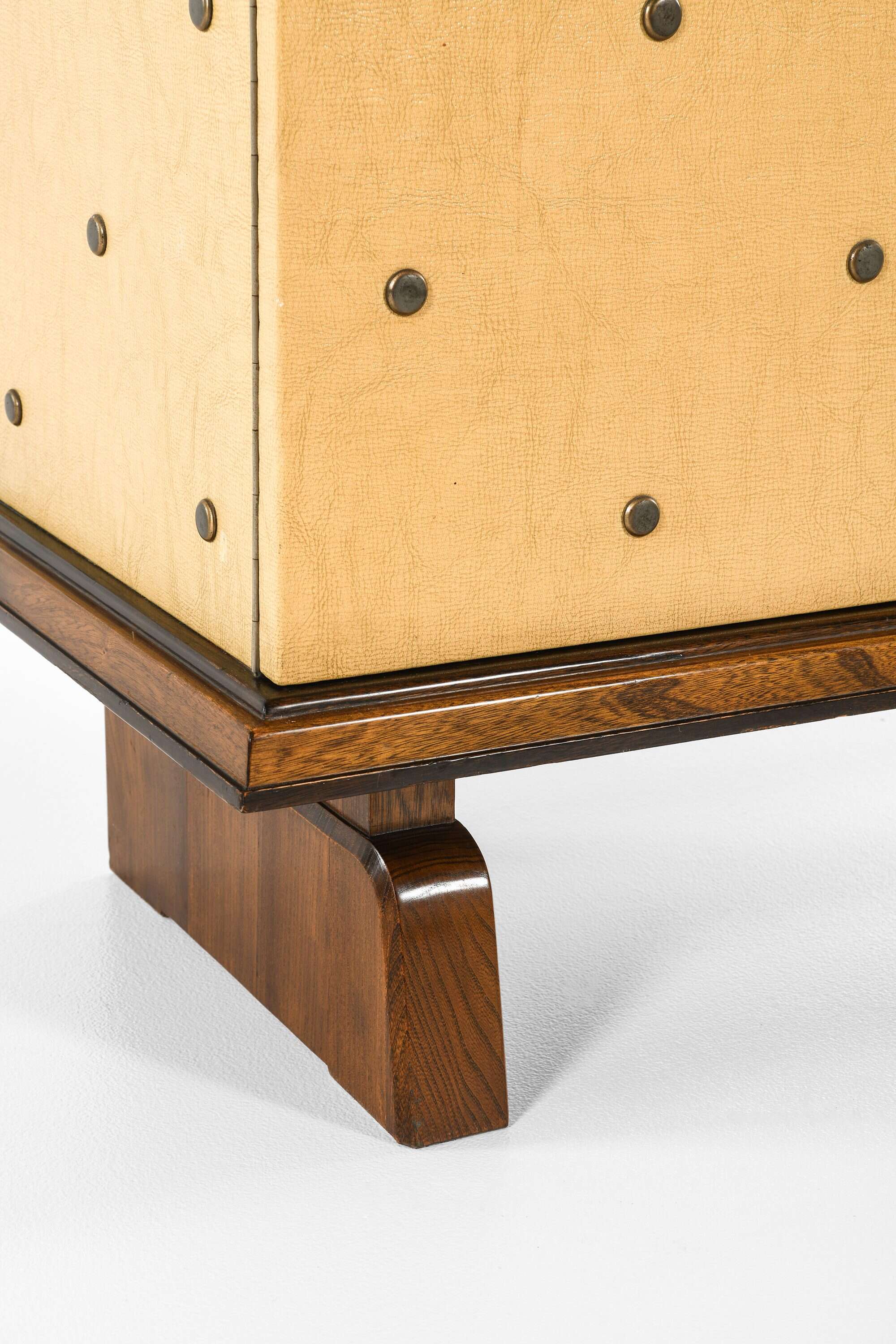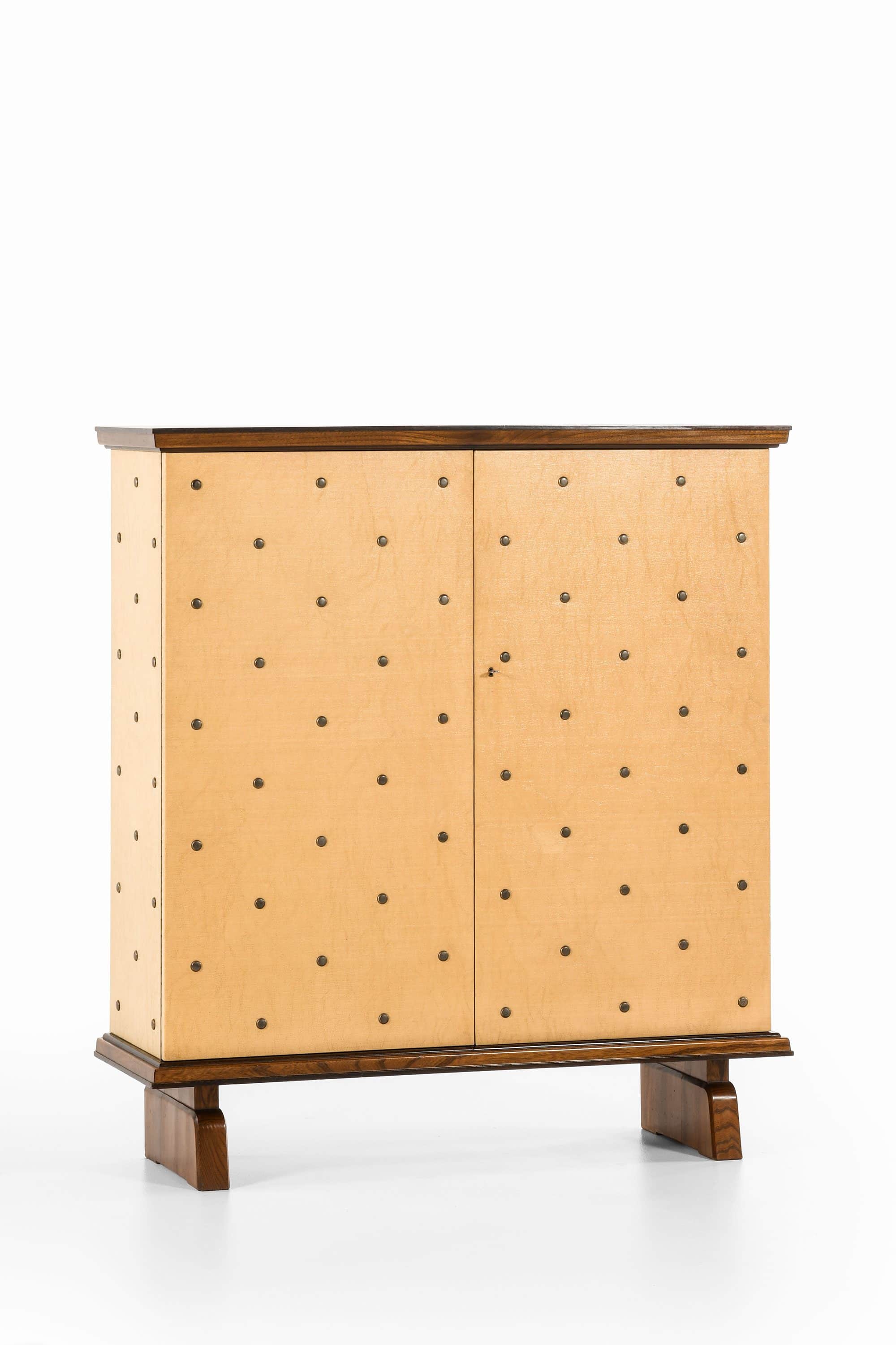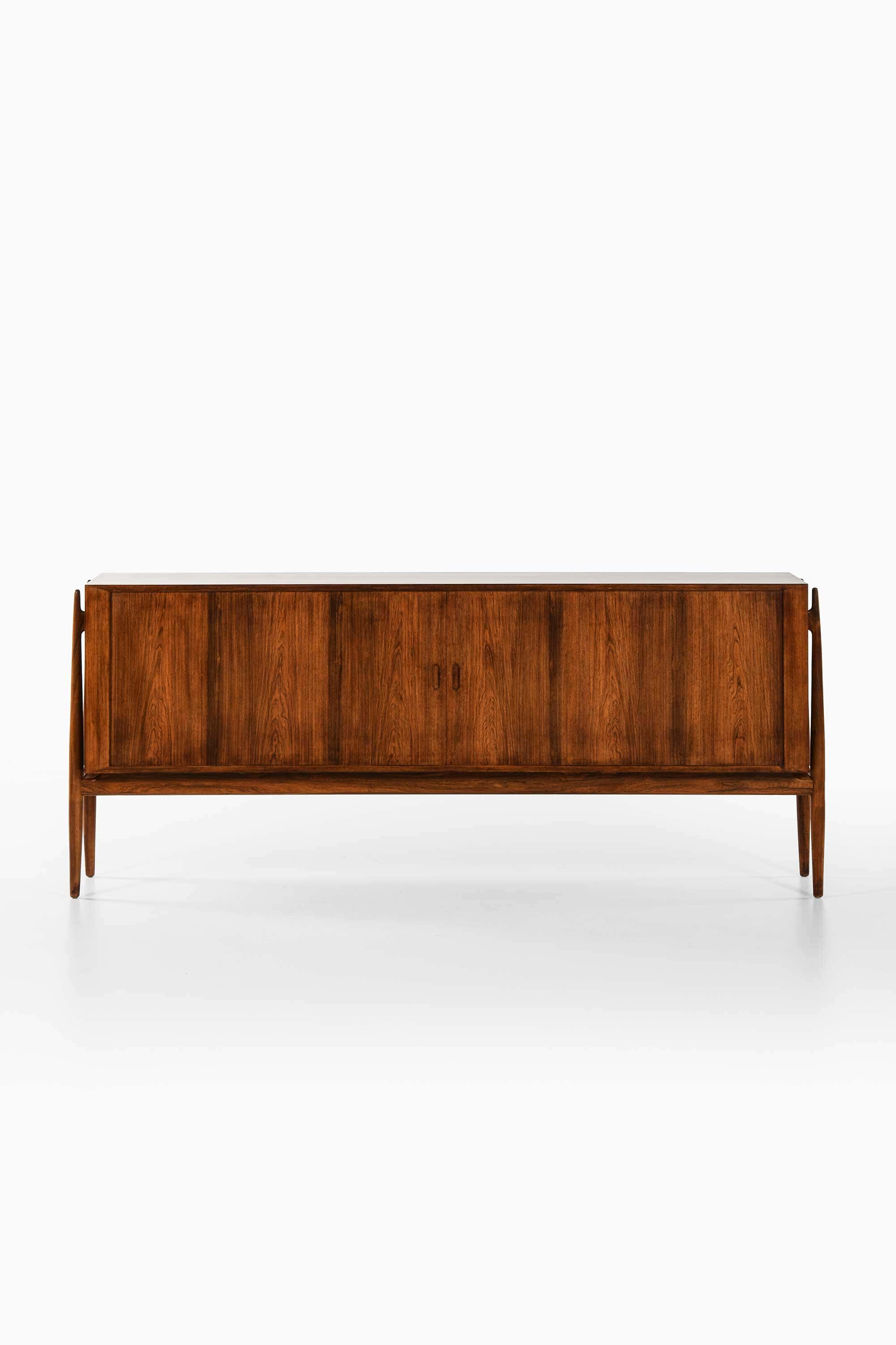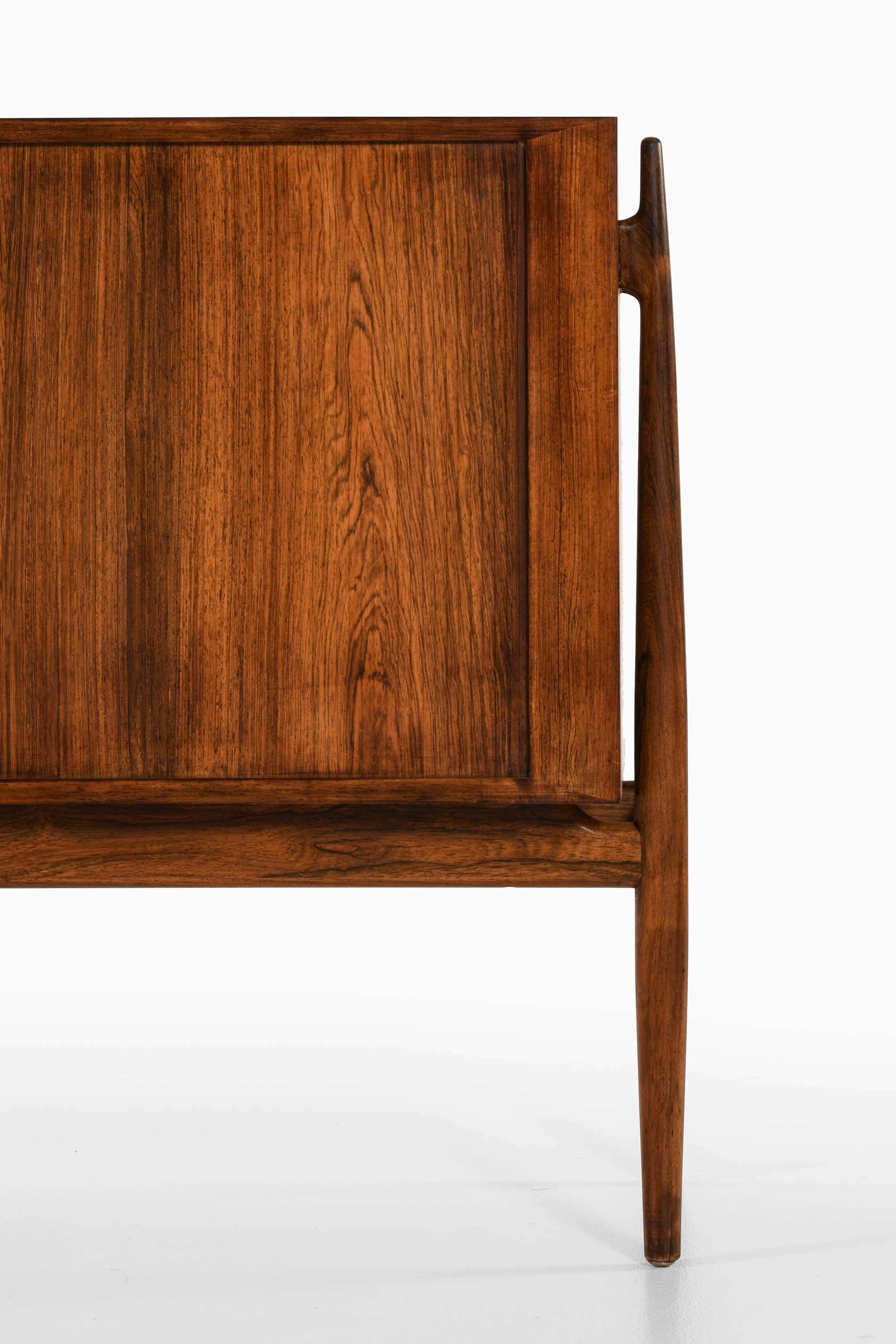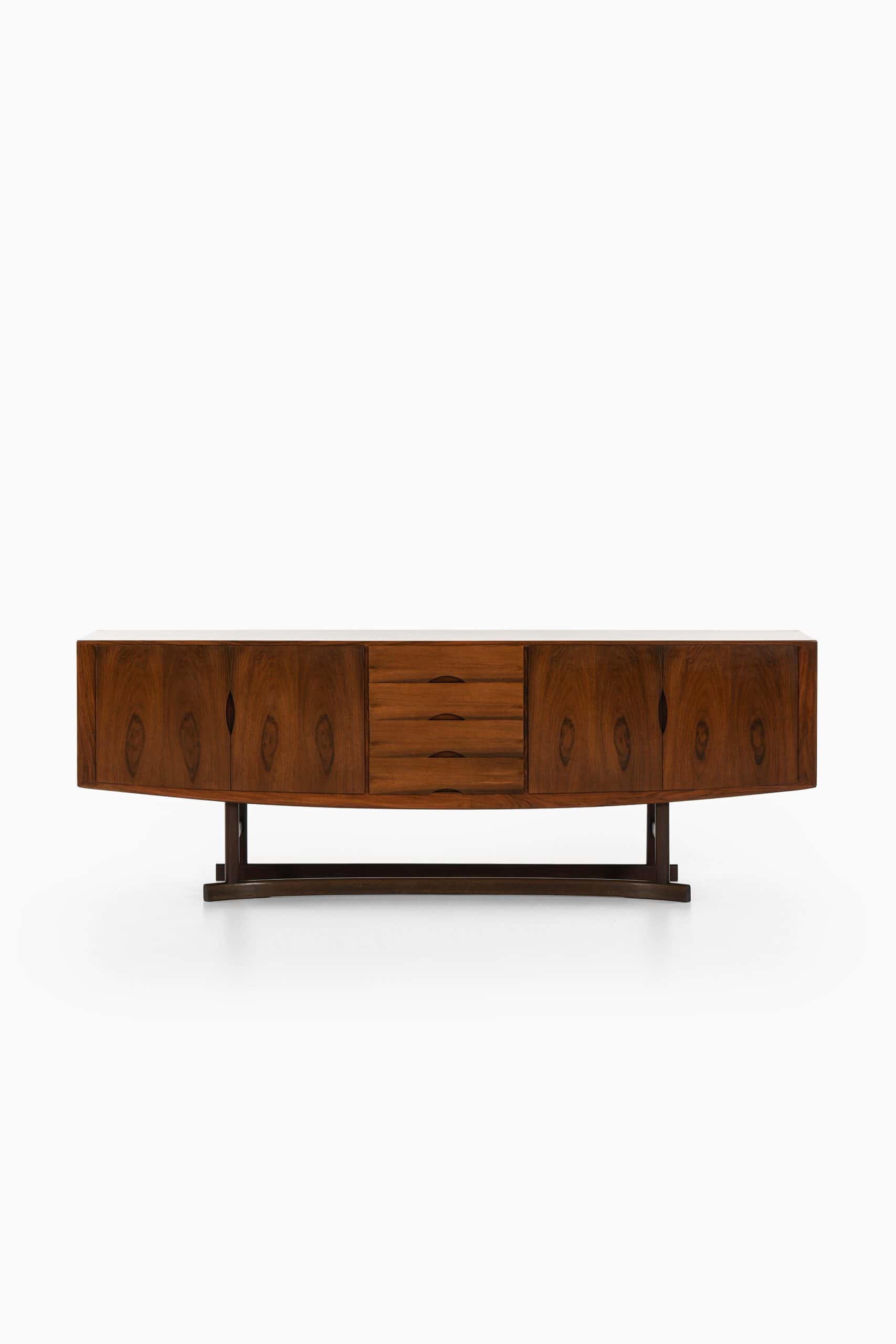The Architecture of Storage
Four Masterpieces of Scandinavian Modernism
In the mid-twentieth century, the concept of storage in Nordic homes underwent a quiet but profound transformation. Where earlier decades had favored heavy vitrines and ornate cabinets, furniture that dominated the interior, Scandinavian modernism introduced a new idea: storage as architecture. Not merely a practical necessity, but a structural element that shaped the visual rhythm of a room. Sideboards and cabinets became miniature buildings in wood, defined by thoughtful proportions, precise detailing, and a refined balance that continues to influence Nordic design culture today.
Otto Schulz – The Decorative Modernist
Otto Schulz, the German-born Swedish designer and founder of BOET, occupies a singular place in the evolution of Scandinavian modernism. His work merges geometric clarity with a refined sense of ornamentation, often expressed through innovative surfaces and carefully considered material contrasts. The rare cabinet shown here exemplifies this approach. Constructed from elm and oak, some sections stained for tonal depth, its rectilinear form is fronted with light-colored imitation leather that introduces a soft, tactile counterpoint to the structure.
Across this surface, Schulz applied his signature Bo-point brass rivets in a precise, symmetrical grid, creating a rhythmic pattern that is both decorative and architectural. The cabinet stands on short, subtly curved wooden legs that lend it a grounded, sculptural stance. Despite its ornamental elements, the composition remains restrained and balanced, embodying Schulz’s mature aesthetic, where material, craftsmanship, and surface design converge with quiet sophistication.
Niels Vodder – Precision and Proportion
Niels Vodder, one of Denmark’s foremost cabinetmakers, approached furniture with exceptional clarity and restraint. The NV-54 sideboard exemplifies his architectural sensibility. Crafted in richly grained rosewood, the cabinet has a deep, even tone animated by subtle dark striations. Its rectilinear corpus rests on a sculptural frame with rounded tapering legs, while the distinctive vertical supports rise slightly above the top and extend below the case, giving the piece a precise and quietly dynamic silhouette.
The tambour doors slide smoothly into the cabinet walls, revealing a carefully arranged interior with shallow felt-lined drawers on one side and adjustable shelving on the other. Integrated inset pulls maintain a clean, uninterrupted façade, allowing the rosewood grain to serve as the primary visual element. Vodder’s Copenhagen workshop produced limited, handcrafted furniture known for refinement, craftsmanship, and its close association with Finn Juhl. The NV-54 remains a distilled expression of his mastery.
Ib Kofod-Larsen – Graphic Refinement
Ib Kofod-Larsen, one of the most distinctive voices in postwar Scandinavian design, combined Danish modernist principles with a heightened sensitivity to material and form. This rare cabinet, produced by Seffle Möbelfabrik in Sweden during the 1960s, demonstrates his refined architectural approach. Executed in richly figured rosewood, the façade displays uninterrupted horizontal grain with mirrored, flame-like patterns ranging from chestnut to deep black. Above, sliding glass doors reveal a rosewood-lined display compartment with adjustable shelves, creating a balanced dialogue between transparency and material density.
The lower cabinet opens to a grid of small, meticulously crafted internal drawers with recessed pulls, each constructed with precisely matched veneers. The entire structure rests on four U-shaped rosewood legs carved with oval cut-outs, reducing visual weight through negative space. The design reflects Kofod-Larsen’s mastery of proportion and Seffle’s celebrated craftsmanship in exotic hardwood cabinetry.
Johannes Andersen – Organic Modernism
Johannes Andersen, the Danish architect and furniture designer, was known for uniting sculptural form with functional clarity. The HB20 sideboard, designed in 1968 and produced by Hans Bech, captures the essence of his mature style. Crafted in richly toned rosewood, the piece presents a strikingly symmetrical composition: four doors with organically shaped recessed handles framing four central drawers whose softly curved fronts blend seamlessly into the façade. The elevated base, defined by arched crossbars, lends the long structure a sense of lightness and architectural poise.
Andersen’s work often departed from the strict geometries associated with mid-century Scandinavian design, instead favoring fluid contours and subtle transitions. The HB20 exemplifies his preference for softened lines and rhythmic form, while the exceptional craftsmanship of Hans Bech reinforces the refined material presence. Together, they produced furniture where storage became both practical and sculpturally expressive.
Conclusion
Together, these four pieces reveal how Scandinavian designers reimagined storage as an architectural discipline – one shaped by proportion, materiality, and a deep respect for craftsmanship. Across their differing expressions, from Schulz’s refined ornamentation to Vodder’s precision, Andersen’s softened modernism, and Kofod-Larsen’s graphic clarity, a shared intention emerges: to create furniture that orders space quietly yet meaningfully. These works stand not only as functional objects, but as enduring examples of how Nordic modernism transformed the everyday into something thoughtfully composed and deeply resonant.
